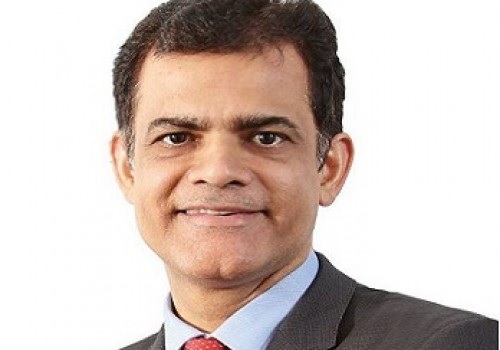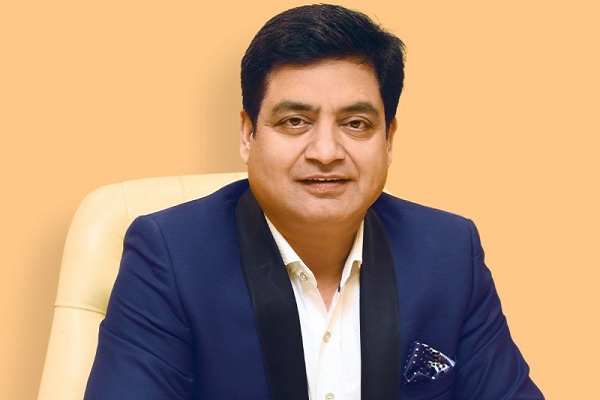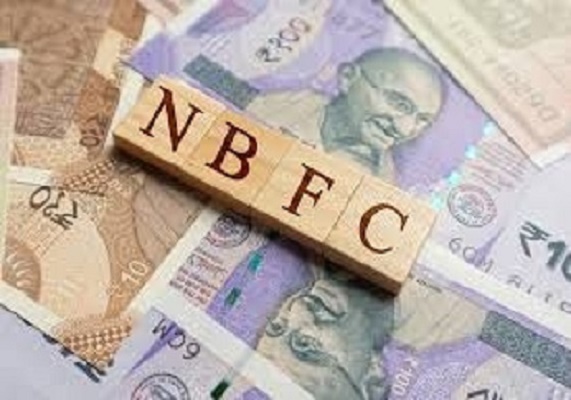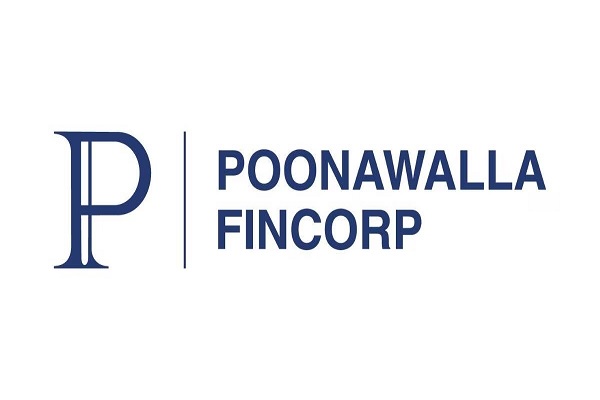NBFC Sector Update - Demand and asset quality trends remain rather weak By Motilal Oswal Financial Services Ltd

Demand and asset quality trends remain rather weak
Improvement expected in asset quality for 3Q has not materialized
*Demand trends remained relatively weak except for a minor improvement in Vehicle Finance: We expect ~9% YoY growth in AUM for our coverage HFC universe, including both affordable and other HFCs. Vehicle financers are projected to report ~22% YoY AUM growth. Gold lenders (including non-gold products) are likely to record ~24% YoY growth. NBFC-MFIs are estimated to post ~3% YoY growth, while diversified lenders are expected to post ~21% YoY growth in AUM. For our coverage universe, we estimate a loan growth of ~16% YoY/~4% QoQ in 3QFY25. Loan growth (relative to our earlier expectations) continued to remain weak due to calibrated growth in unsecured retail, muted disbursements in microfinance, and some weakness seen in mortgages (particularly for select affordable HFCs).
*NIMs exhibit slight contraction; expected repo rate cuts to give a breather: CoB for most NBFCs has remained stable or experienced a slight increase, driven by higher costs of debt-market borrowings (from a rise in T-bill rates). NIM and spreads for NBFCs showed signs of slight contraction, primarily due to a rise in CoB and to a lesser extent from higher liquidity on the balance sheet. Fixed-rate lenders, such as vehicle financiers, who had implemented lending rate hikes in previous quarters, will witness healthier NIM expansion, driven by expected repo rate cuts in 1HCY25. At the sectoral level, we expect NIM to either contract or remain broadly stable for all NBFCs/HFCs in our coverage except Aavas, CIFC, and CREDAG, where we expect NIM to expand.
*Improvement expected in asset quality for 3Q has not materialized: Improvement in asset quality expected in the seasonally stronger second half of the fiscal year has not materialized in 3QFY25. While there was no alarming deterioration, for most NBFCs/HFCs in our coverage, the asset quality either remained stable (relative to expectations of an improvement) or exhibited minor deterioration. Credit costs are expected to remain elevated in MFI, with expectations of a sequential increase (in absolute terms) for CREDAG and Spandana but a decline for Fusion. Except for affordable housing and power financiers, credit costs are expected to remain elevated for vehicle financiers (except MMFS) and diversified lenders.
*PAT growth of ~8% YoY for the coverage universe, driven by weaker NIM, sticky credit costs, and yet another stressed quarter for NBFC-MFIs: We estimate ~15%/15%/8% YoY growth in NII/PPoP/PAT in 3QFY25 for our NBFC coverage universe. Excluding NBFC-MFI, we estimate ~12% YoY growth in PAT for our coverage. Among NBFC sub-sectors, our preference is Power Finance, Housing Finance/Mortgages, and Vehicle Finance (primarily to play the NIM expansion from repo rate cuts). We maintain underweight in microfinance as the recovery is likely to be further prolonged, following MFIN’s decision to postpone the implementation of its three-lender cap to Apr’25. Our top picks in the sector: SHFL, PFC/REC, and PNBHF.
Mortgage demand trends exhibit relative weakness for affordable HFCs
*Disbursement momentum in large HFCs is expected to outperform that of select affordable HFCs. Part of the weakness observed in the mortgage space can be attributed to Karnataka, where the slow pace of e-Khata registrations has impacted property transactions and led to weak disbursements for lenders with higher concentration in this state.
*NIMs are expected to moderate sequentially for both large and affordable HFCs (except Aavas) due to an ongoing rise in CoF, higher liquidity on the balance sheet, and sustained high competitive intensity. Asset quality has shown no signs of weakness, with an improvement bias, and credit costs are expected to remain benign.
*We anticipate credit costs for LICHF to be at ~20bp (vs ~10bp in 2QFY25). Margin is expected to contract ~5bp QoQ, driven by a slight increase in CoF. Yields are expected to remain stable QoQ.
*We estimate HomeFirst to report a ~19% YoY growth in disbursements, leading to a healthy AUM growth of ~33% YoY. We expect NIM to expand ~15bp QoQ for Aavas (aided by the PLR increase in Oct’24), while we expect NIMs to contract ~30bp QoQ for Homefirst due to the ongoing rise in CoB and higher liquidity. Asset quality is also expected to remain range-bound for HomeFirst and Aavas.
*We estimate PNBHF to deliver a ~17% YoY growth in loan book as of Dec’24. For PNBHF, we expect NIM to remain largely stable. Asset quality improvement and recoveries from the written-off pool in both Retail/Corporate could potentially result in provision write-backs (like in the previous quarter).
*For Five Star, we expect disbursements to decline ~21% YoY as the management earlier revised its FY25 AUM growth guidance from ~30% to ~25%. We estimate this to translate into a ~25% YoY growth in AUM. NIMs are likely to remain stable sequentially. We expect a minor deterioration of ~10-15bp in GS3, resulting in an increase in credit costs to ~80-85bp (v/s ~70bp in 2QFY25).
Vehicle finance – Disbursements better than expectations; asset quality improvement still elusive
*MMFS reported disbursements of ~INR164b in 3QFY25 (up ~7% YoY). We estimate an ~18% YoY growth in business assets for MMFS in FY25. We expect credit costs for MMFS to be at ~1.1% in 3QFY25 (vs. credit costs of 1.4% in 3QFY24), aided by the provision release during the quarter (despite largely range-bound asset quality).
*For CIFC and SHTF, we expect a sequential growth in disbursements, which is likely to translate into ~31%/18% YoY growth in AUM for CIFC/SHTF as of Dec’24.
*We estimate NIM expansion for vehicle financiers in FY26, driven by a decline in CoB. Asset quality in vehicle finance has largely remained range-bound in 3Q with improvement, which is typically seen in 2H of the fiscal year, still elusive. The expectation of asset quality improvement for vehicle financiers is now anchored on improvements in the economic activity and agri output in 4Q.
Gold finance – Steady growth in gold loans with some contraction in NIMs
*We expect gold loan financiers to deliver healthy gold loan growth and decent tonnage growth in 3QFY25. Additionally, we anticipate MGFL’s standalone entity January 2025 3 December 2024 Results Preview | Sector: Financials - NBFCs to show decent gold loan growth, though the drag from the ban on Asirvad will keep consol. gold loan growth muted during the quarter.
*We expect ~3%/1% sequential growth in the gold loan portfolio of MUTH/MGFL. Gold loan NIMs could experience minor QoQ contraction due to a sequential decline in yields. Asirvad MFI, a subsidiary of MGFL, may face further asset quality deterioration and elevated credit costs (like in the last quarter).
Microfinance – Asset quality pain continues; early green-shoots in Dec’24
*MFIs continued to experience asset quality stress due to customer overleveraging in unsecured retail lending. Disbursements were muted for all three NBFC-MFIs – CREDAG, Fusion, and Spandana – in our coverage universe. We expect AUM to remain flat for CREDAG and anticipate a decline of ~7%/9% QoQ in AUM for Fusion/Spandana in 3QFY25.
*Higher NPA formation will also result in interest income reversals, which could lead to pressure on the NIM in 3Q or 4Q, depending on when a particular MFI takes write-offs.
*We expect an increase in PAR90 (or higher write-offs to keep GS3 within certain thresholds) for all three MFIs in our coverage and significantly elevated credit costs. We expect credit cost stress to peak in 3QFY25; however, the sectoral drag is likely to persist until 1QFY26. We estimate annualized credit costs of ~8%/ ~21%/35% for CREDAG/Fusion/Spandana in this quarter.
Diversified financiers: Unsecured retail remains weak with high credit costs
*LTFH reported a ~23% YoY/4% QoQ growth in Retail Loans. Since the company is not growing its wholesale segments (such as real estate and infrastructure), the consolidated loan book grew ~2% QoQ in 3QFY25. In our view, LTFH could likely utilize its macro-prudential provisions (management overlay) for stress in its MFI business. After factoring in the utilization of this management overlay, we expect annualized credit costs at ~2.8% in 3QFY25.
*BAF is likely to report ~28% YoY/7% QoQ growth in AUM. We estimate a ~5bp QoQ contraction in NIM for BAF with credit costs at ~2.2% (vs ~2.1% QoQ).
*We expect Poonawalla to report ~38% YoY growth in AUM. The company took a one-time credit cost of ~INR6.7b for its STPL loan book in 2Q. While we do not expect this to recur, credit costs will remain higher than the normalized run rate prior to the management change.
*For IIFL Finance, we estimate gold loan AUM to grow ~44% QoQ to ~INR155b as of Dec’24. MFI business disbursements will be weaker than last quarter and MFI credit costs will be elevated. We estimate a PAT of INR2b in 3Q (vs. loss of INR1.6b in 2Q which included an exceptional loss of INR5.9b).
Power Financiers: Disbursements remain healthy, with renewables continuing to show improvement; credit costs to remain benign
*Power financiers have a strong sanction pipeline, positioning them for healthy loan growth in 2HFY25. However, sanction trends may be slightly weaker in 3QFY25 due to broad-based slower economic activity. Asset quality is expected to further improve, supported by continued stressed asset resolutions
*For PFC, we expect disbursements growth of ~110% YoY and ~6% QoQ, leading to loan book growth of ~13% YoY/5% QoQ.
*REC has reported disbursements growth of ~18% YoY/ 16% QoQ, which could potentially result in loan book growth of ~15% YoY/5% QoQ.
For More Research Reports : Click Here
For More Motilal Oswal Securities Ltd Disclaimer
http://www.motilaloswal.com/MOSLdisclaimer/disclaimer.html
SEBI Registration number is INH000000412










More News

Healthcare Sector Update : CGHS rate revision - A sweeping positive move by Emkay Global Fin...














